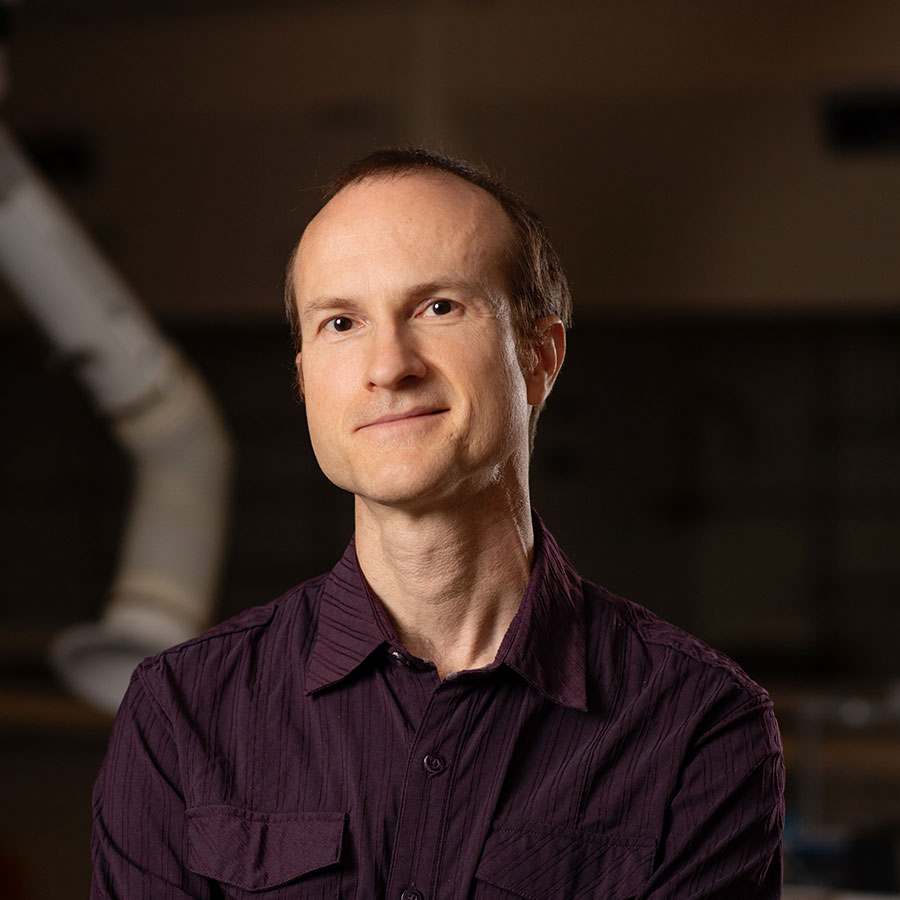Associate Professor of Chemistry Tim Machonkin was born in Rochester, New York to a two-chemist family. His interest in chemistry took off from there, and he attended college at the University of Michigan, where his love of transition metal-containing enzymes began. From his sophomore year until graduation, he worked with Professor Vincent Pecoraro, studying synthetic models of the active sites of manganese-containing enzymes and the fundamental chemistry of manganese in high oxidation states. Machonkin graduated in 1993 with a B.S. in Chemistry (Honors) and a B.S. with a concentration in Cellular & Molecular Biology.
After a brief internship at Abbott Laboratories, Machonkin attended graduate school in Chemistry at Stanford University. There, he worked with Professor Edward Solomon on the chemistry of a copper-containing enzyme in human blood called Ceruloplasmin, as well as its yeast homolog called Fet3p. Machonkin developed expertise in many areas of optical and magnetic resonance spectroscopy, in protein chemistry and in air-sensitive technique. He also developed a love of teaching: he mentored several undergraduates in the lab, was a freshman/sophomore academic adviser for three years and taught for two summers in the Stanford Summer Science & Math Institute (a program for incoming first years predominantly from underrepresented minority groups interested in science and engineering).
After graduating in 2000, Machonkin went to the Biochemistry Department of the University of Wisconsin, where he was a National Institutes of Health postdoctoral fellow in the laboratory of Professor John Markley. There, Machonkin developed novel methods for obtaining nuclear magnetic resonance (NMR) spectra of proteins that contain paramagnetic transition metal ions—a type of system that is generally considered to be difficult or impossible to study by NMR.
In 2003, he returned to Rochester where he began his first faculty position in the Department of Biochemistry and Biophysics at the University of Rochester. Machonkin began using a technique called "directed evolution", which is a type of high-throughput random mutagenesis that can allow one to "evolve" novel properties in proteins. He used this technique to modify a copper-containing enzyme called Tyrosinase for improved activity toward chlorophenols, which are common pollutants in wastewater, particularly from the pulp and paper industry. The eventual goal is to demonstrate that such a modified enzyme could be applied to remove pollutants.
At Rochester, Machonkin realized that he missed teaching and working with undergraduates. So, in 2006, he joined the chemistry faculty at Whitman College. He's continued to work on mutagenesis of metal-containing enzymes with possible applications in the remediation of pollutants.
In what Machonkin calls his "largely hypothetical free time," he enjoys hiking, cycling, skiing, cooking and listening to 20th-century classical music. He's also, on occasion, been known to play violin and viola.

